At long last, I finally got around to posting a little trip report on our kayaking trip to Panama last year.
I read about Guna Yula in a book called "50 Places to Paddle Before You Die" and the description really captivated me. "A destination that an anthropologist and a beach bum can agree on". I brought it up with the two Rob's and they agreed. Lets book it! From what I have read, there are only a couple outfitters that have permission local chiefs to operate in this area, and they are required to have local guides and local support crew.
This was our first fully outfitted trip, which we booked through Southern Sea Adventures. Nothing but good to say about them, and everyone involved. We had a fantastic experience and would highly recommend them. They take care of every last piece of logistics, all you have to do is show up at the airport with the recommended gear. They take care of everything else.
The Guna Yala Archipelago (aka San Blas Islands) is on the Caribbean side of the country and is part of the Guan Territory. There is a strip of land on the mainland about 373 kms long and 365 islands, about 50 of which are inhabited. The total population is around 33,000, most of whom live on these islands. The economy is mainly fishing, agriculture and more recently tourism. But they are very slow and careful with this development. They have a real gem here and they know it. Only locals are allowed to own land and businesses.
On Day 1 they pick you up at the airport and bring you to the hotel. We had a team dinner with our guide the rest of our group. We were given large drybags to store our gear, and anything we didn't need, like our suitcases could remain stored at the hotel until we got back. It was a very early rise the next morning for breakfast and we hit the road from Panama city to head to the port of Barsuggum. The drive can take between 2-3 hrs. You have to go pretty slow on the roads and you are not allowed to pass other traffic. There are several checkpoints along the way, as this is a self governed region with the own rules, so you do need to show your passport. Tourists aren't allowed to travel freely in Guna Yala, you must be escorted at all times by a Guna guide. Because it was so windy, the port wasn't' open, all boat traffic launched from upriver to the east of the port, so that is where we headed.
 |
| Getting our ferry out to the islands |
 |
| Helene and Tony, from Vancouver |
Originally, our plan was to ferry east for about 50kms all the way to Tigre Island, and spend the next week making our way back west the way we came, but because of the strong winds we had to change our plans.
 |
| Barsuggum is on the left, Tigre Island on the far right. Red arrows are the other islands we camped on. |
The trade winds from the north east are a CONSTANT, but were worse than usual during our visit. It was a pain when right in your face, but it did keep the bugs away. Our total distance for the trip was somewhere between 90-120kms.
Our first stop was Gardi Sugdub (Crab Island) for fuel. Whenever we had to ferry a long distance, there would always be a 'pilot' up at the bow, and he would use hand signals to let the captain know what to do and where to go. He had amazing balance, and usually held on to the painter to help him stay upright.
 |
| The Guna flag was adopted in 1925 after their successful revolution against the Panamanian governement. From what I understood, the red is for the blood spilled, the yellow is for the sun and the swastica is the symbol of unity in their culture. You see these EVERYWHERE in Guna Yala, and it took a little bit of getting used to :-) |
Our first night was on Arridub Island, which means "Everyone's Island". This is one of the islands that tourists can visit. You get dropped off here, camp for the night and get brought back to the mainland the next day, and they provide your meals. We met several people here that were doing that.
 |
| One of the few chores that you are responsible for is setting up your own tent |
 |
| After lunch we geared up for our first paddle. A quick jump across to the nearest island, about 850m away. Joel, from Chicago was the other member of our group, seen on the far left in this picture. |
 |
| Traditional dugout canoes, called cayucos. Sometimes used with a sail and paddled by 2 or 3 people |
 |
| This island had a small village on it, and the locals were selling crafts. Their main craft are the Molas. They are part of what forms traditional clothing of Guna women. Its an essential source fo income for Guna women and a great way to support local people. The mola originated with the tradition of Guna women painting their bodies with geometric designs, usually in available natural colors. Later these same designs were woven into cotton and sewn into the cloth available from ships that came to barter for coconuts. I should also note, that its common courtesy to ask permission before taking a picture, and I'd only do it if i spent some money. |
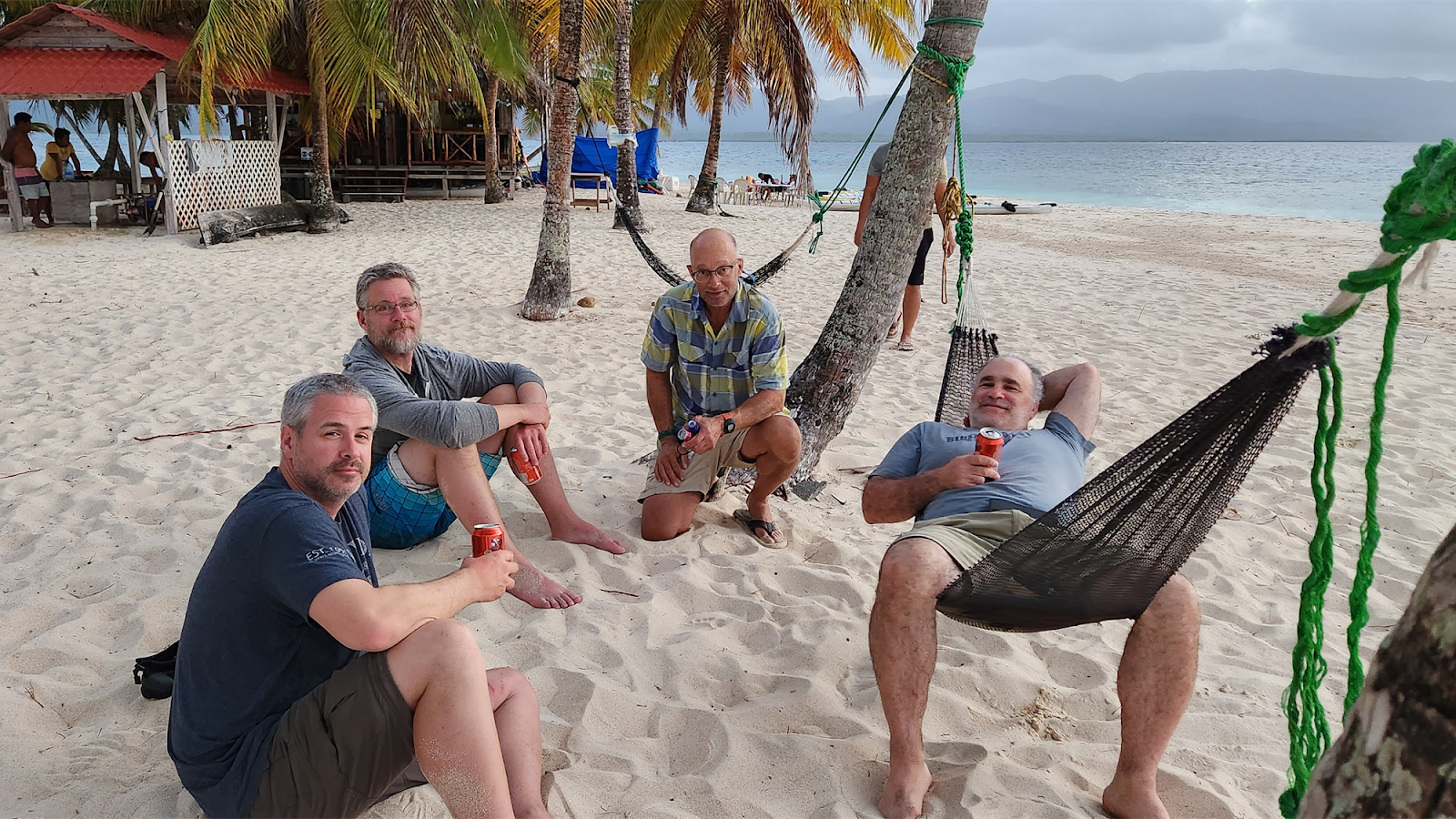 |
| You can get cold beer on most islands for pretty cheap ($2 or $3 USD) |
 |
| Coffee usually served between 630-7am, with breakfast shortly after. We were typically paddling by 9am, so it was always good to be up early and packed and ready to go before breakfast |
 |
| Most mornings we'd gather around the chart with our guide and discuss the days plans. Depending on the winds, he'd give us options and we'd decide as a group what we would do. |
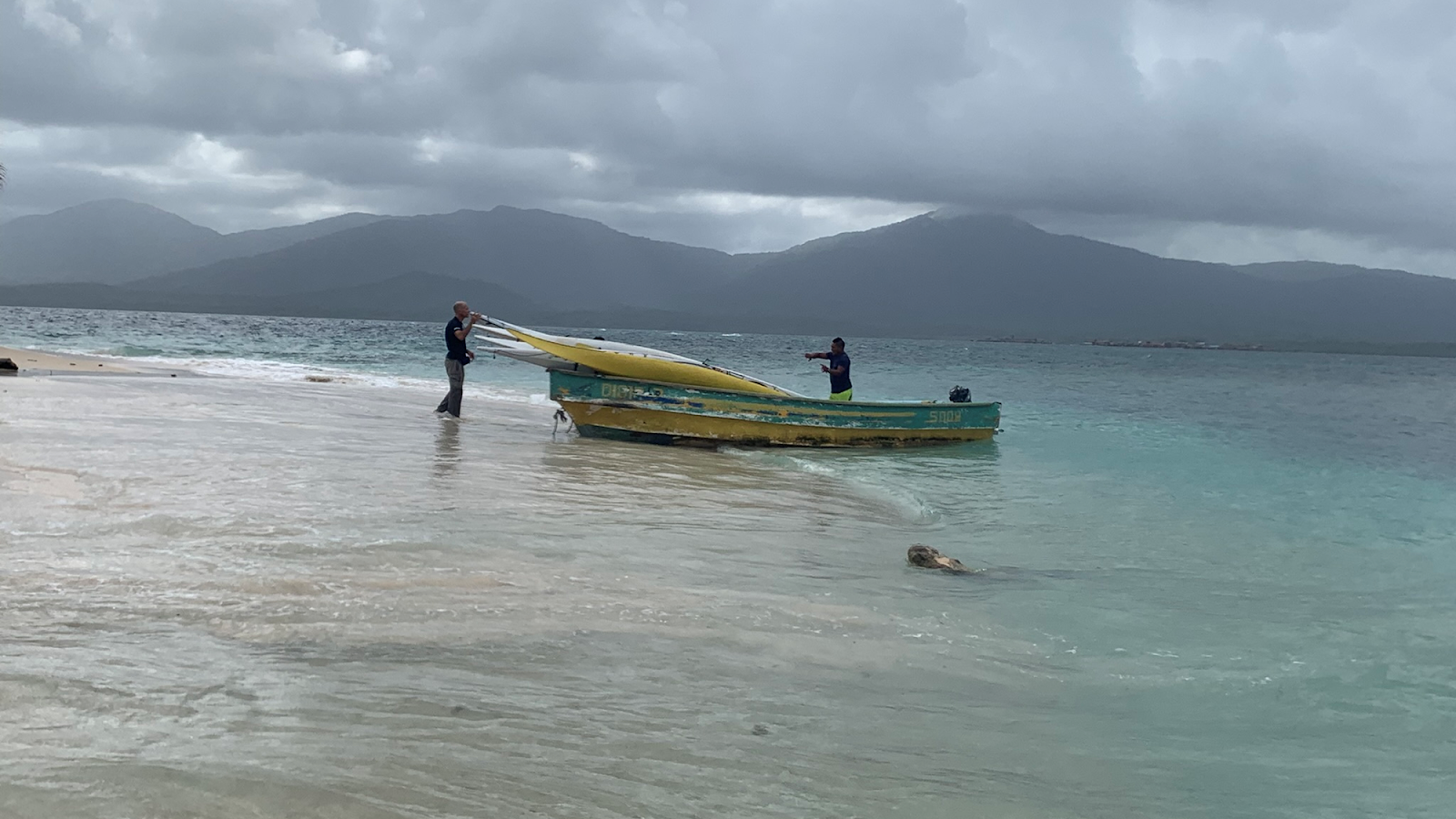 |
| After our first day, we lost our guide, Iann Sanchez, seen above on the left. He had to go to the hospital to deal with a nasty infection that developed on his calf. On this trip, I found we needed our first aid kits more often than usual, and the need for polysporin seemed much greater. Make sure to be prepared for this, and keep any cuts clean to avoid infection. Our other guide, Nemasio would be by himself with us, and he spoke very little English. |
 |
| Typical lunch break. Sometimes they'd put up a tarp to help with wind protection |
 |
| Interesting fact, in Guna culture the groom typically moves in with the brides family, and takes on the brides last name. |
 |
| We stopped at this island "Sichirdub" to snorkel around the reef that surrounded it. The snorkeling on this trip was good, but after Belize, I must admit I'm hard to impress, haha |
 |
| Typically 1 or 2 families will stay on an island for a month or two, to harvest fish and then go back to the village and another family will move in. This group approached us to sell some crafts. On the right you will notice an albino woman. In global populations, albinos occur in about 1 in every 17,000 people, but in the Guna population, its 1 in every 150. They are revered in Guna culture, and many of the chiefs (called Sailah) are albino. |
 |
| We camped on Bebsidub Island after about 20kms of paddling |
 |
| Toilet facilities were typically set up like this on one side of the island. Great view for pooping! |
 |
| The next day, we decided to paddle to the mainland and explore Paloma River |
 |
| Nice to get a wash in fresh water! |
 |
| We had a beautiful lunch on this bend in the river |
 |
| A dead and bloated caiman. We saw a couple live ones, but impossible to take a picture. I never would have seen it at all if our guide didn't point them out. |
 |
| It was a real slog to paddle back in the wind. We stopped on one island for a snorkel break |
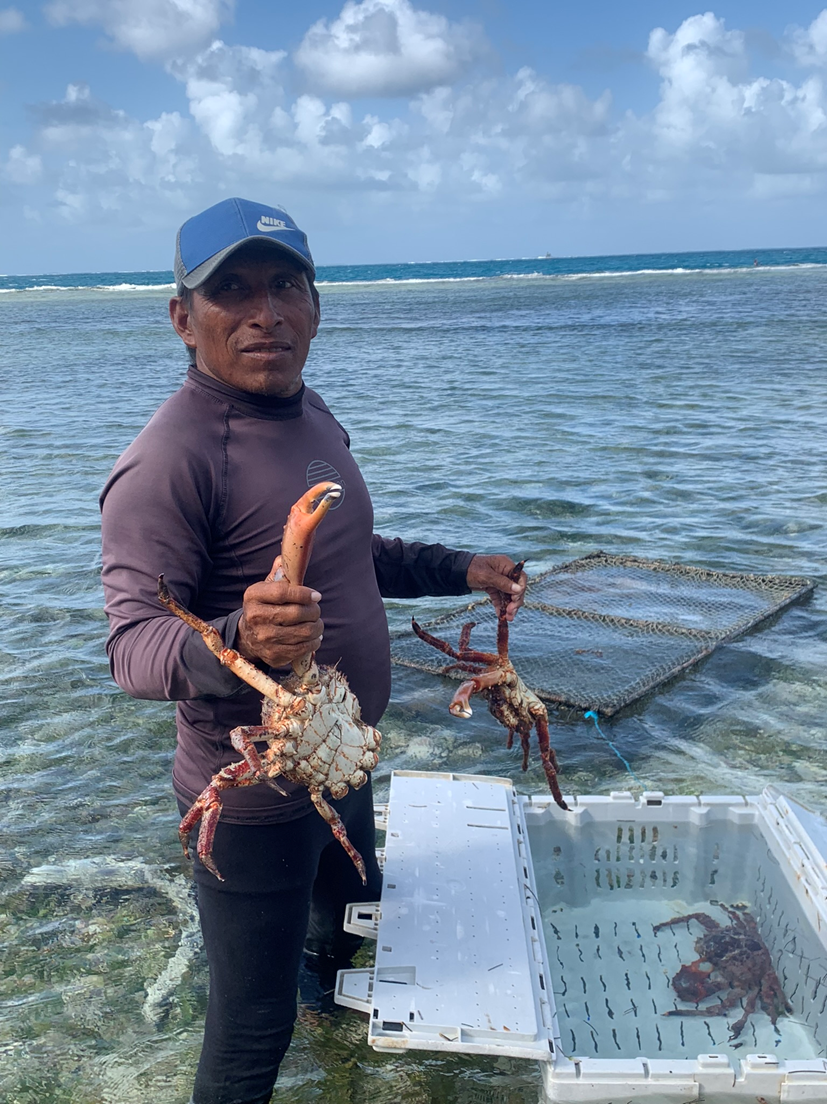 |
| We got some fresh seafood from the locals on the island for dinner |
 |
| Yum! |
 |
| The next morning we picked up our new guide/translator, Alberto. He was not a kayaker, but could translate from Spanish to English for us. We were doing ok with Nemasio, but it was a big help with Alberto. |
 |
| Nemasio (left) and our amazing chef, Horice (right) |
The goal was to get to Tigre Island today, but the channel to get across to Tigre was really really rough, so we got a shuttle from the nearest island.
 |
| Once on Tigre, we set up camp near the community center |
 |
| That night, the put off a traditional dance show for us, which was amazing. |
 |
| We got to explore the village |
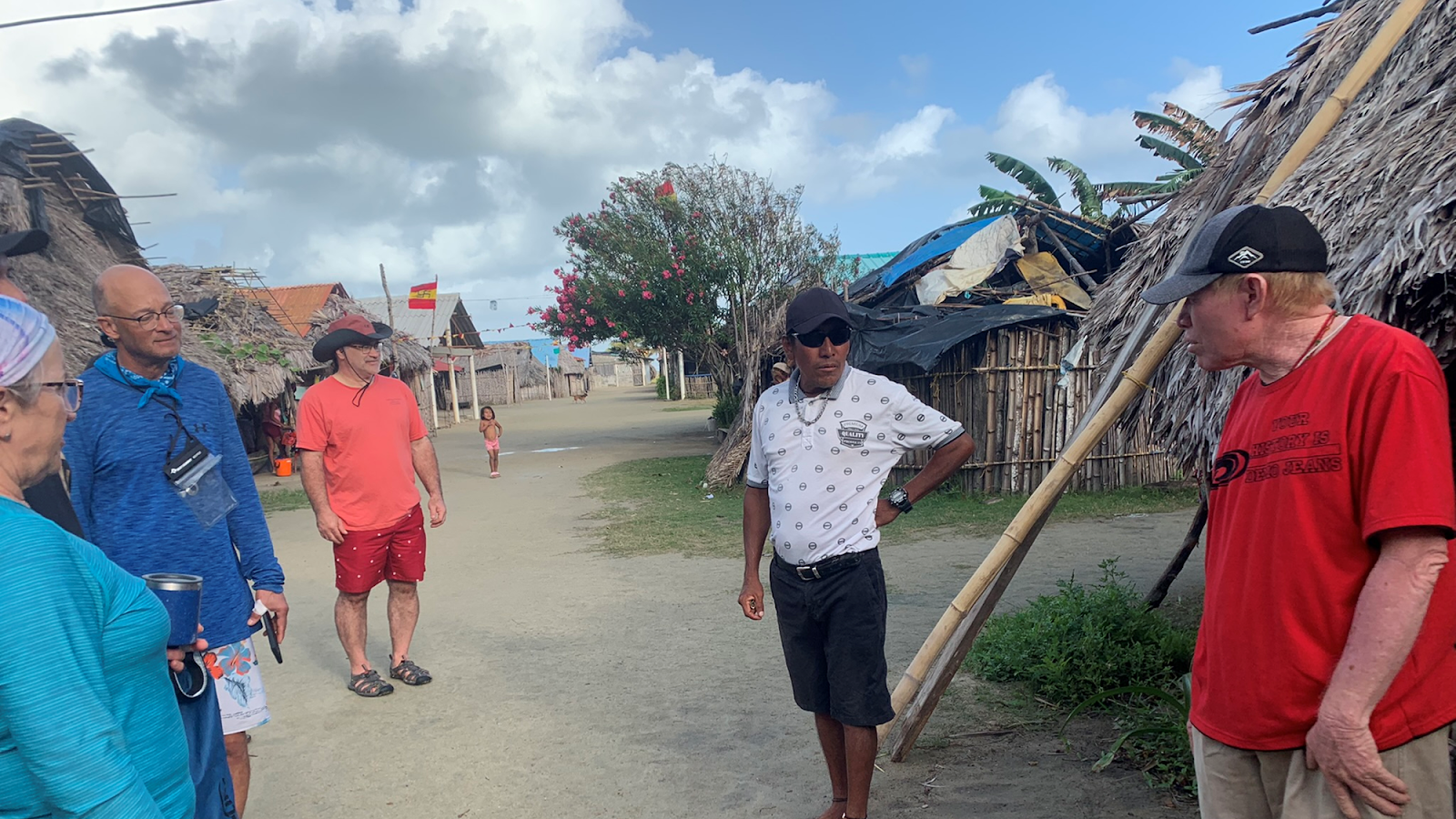 |
| Meet the chief (note that he is albino) |
 |
| And shop for some crafts |
 |
| Rob couldn't resist having a game of soccer with the kids |
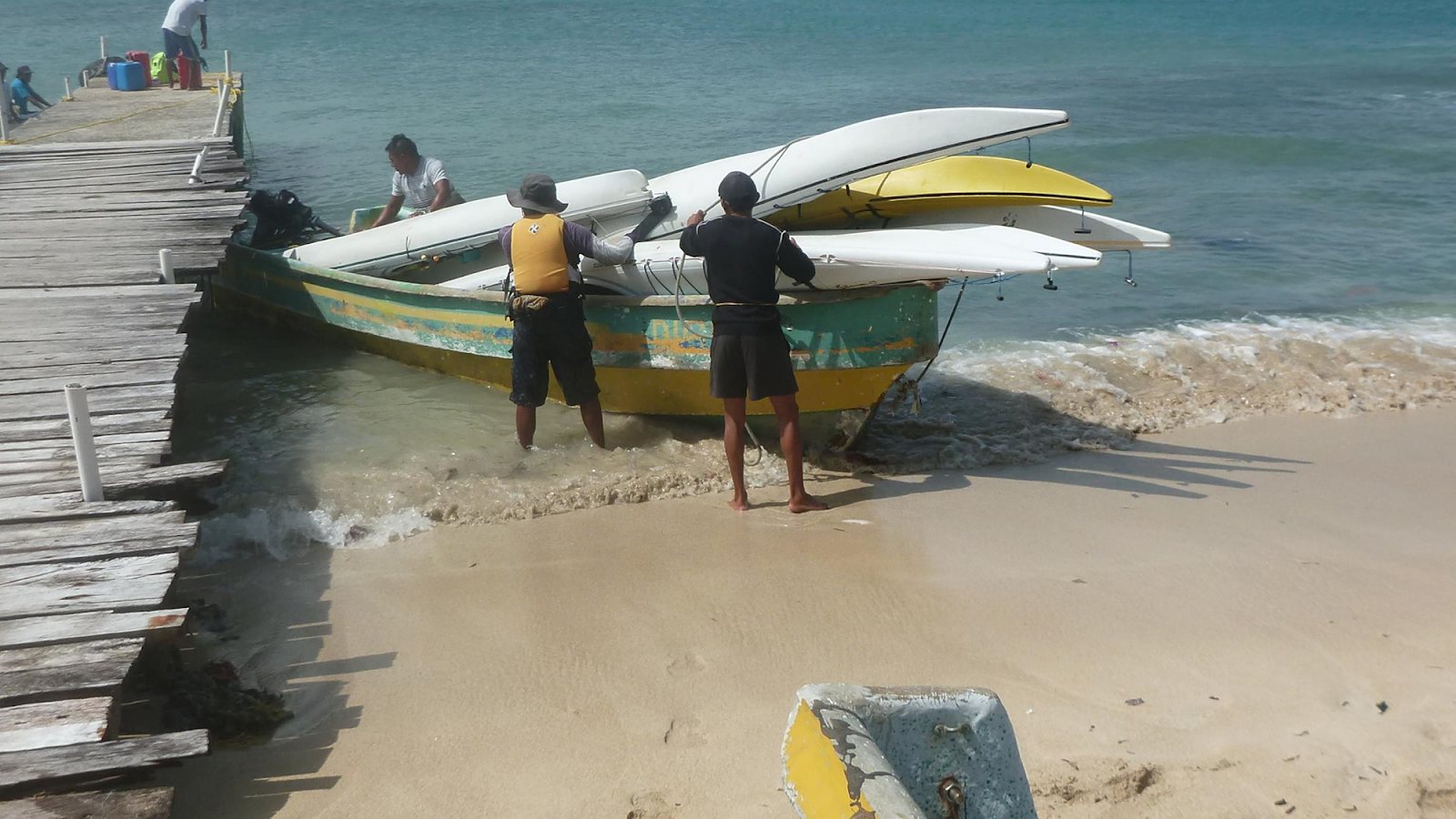 |
| The next day we loaded up to head back across the channel |
 |
| This village had a bridge that connected two islands. It also had a small landing strip for small planes |
 |
| Nemesio points the way |
 |
| What a view for lunch! |
 |
| We camped on a different island, that had a few families living there. The 3 kids in this pic were a lot of fun, they would not leave me alone when I was setting up the tent. They were really impressed with my blow up sleeping pad. |
 |
| On some islands you will find holes like this. It will fill with water that is no good to drink, but fresh enough for getting a wash. |
 |
| On the last day we paddled back to Arridub Island, but followed a route close to the mainland in among the mangroves. |
 |
| Our last night we a great dinner and a small party. This is Arturo, him and I got along great even though he spoke no English. |
 |
| Last day, waiting for the shuttle to the mainland |
 |
| Rob Bertolo, Me, Nemesio and Rob Scott |
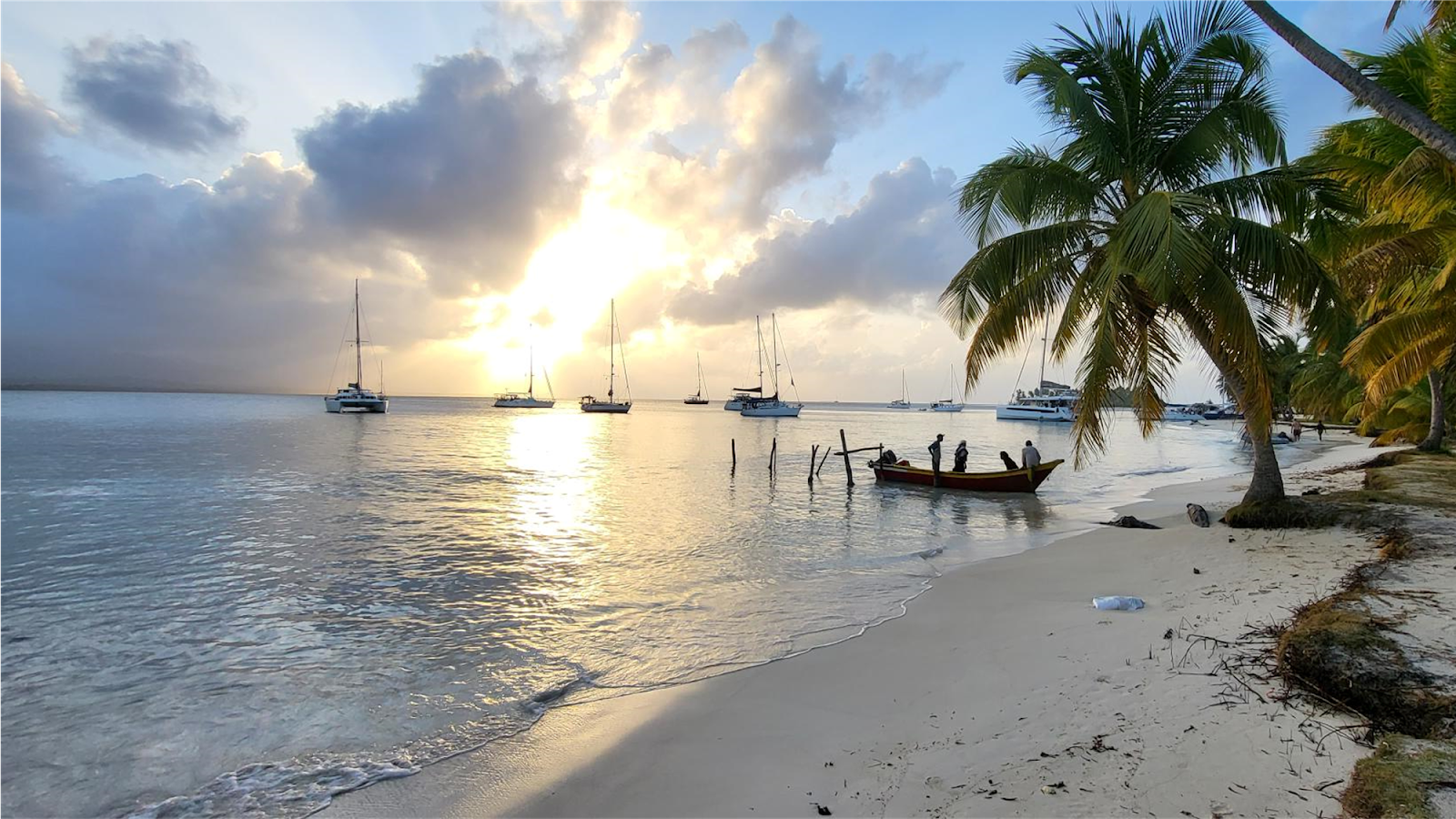 |
| It was another amazing trip...can't wait for the next one! |


















































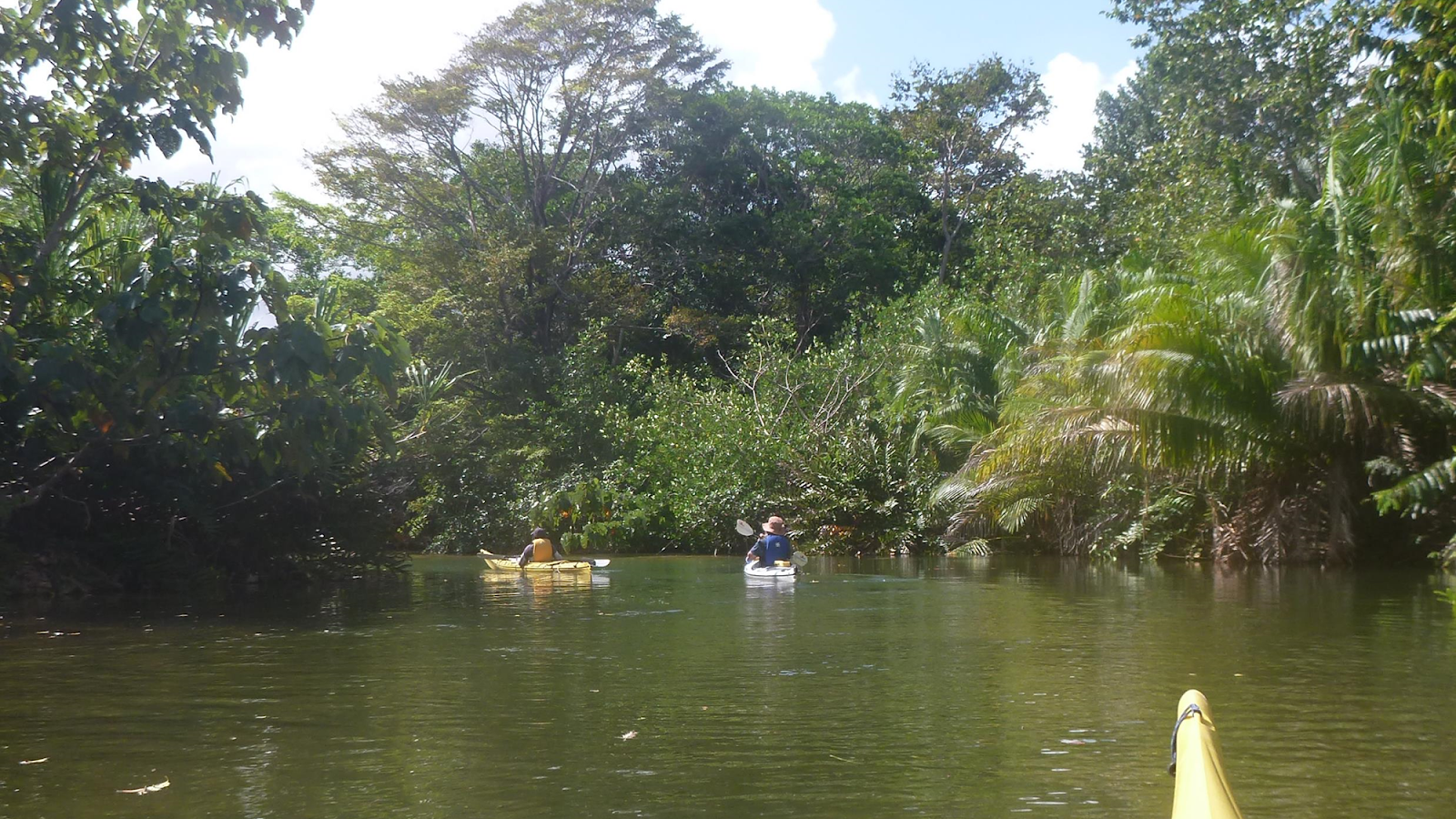




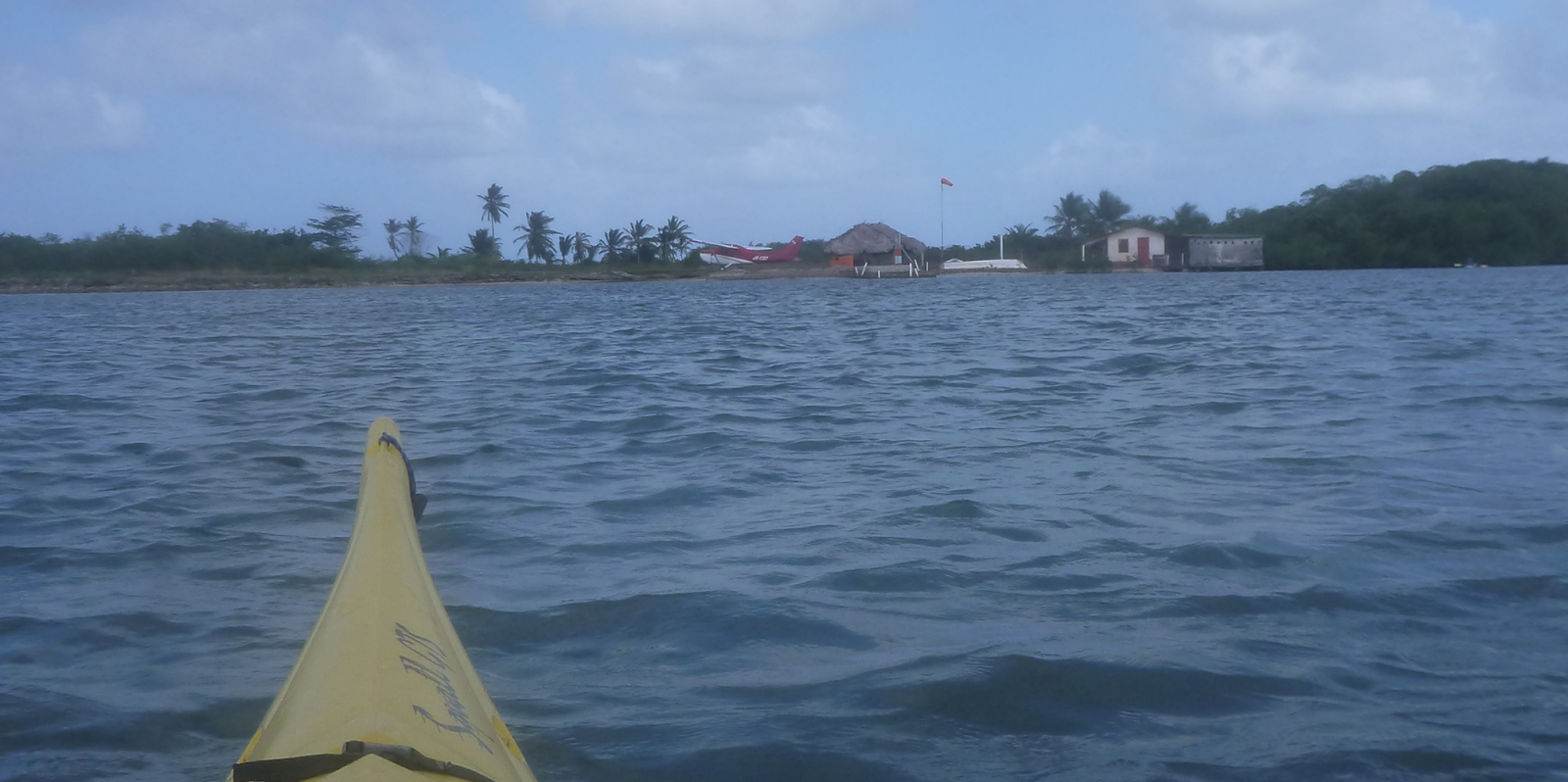

No comments:
Post a Comment